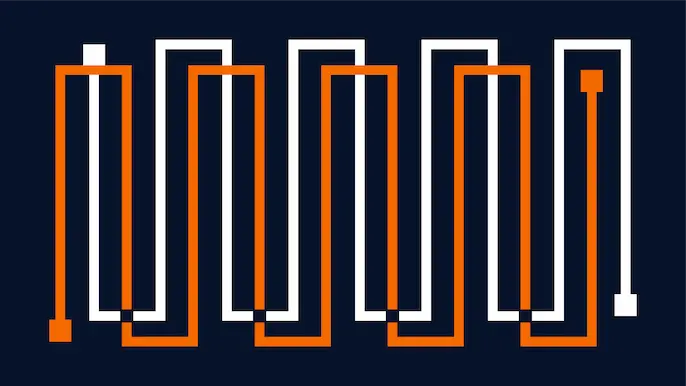
Cloud Security: What is it Really, Driving Forces Behind the Transition, and How to Get Started
In a recent episode of Agent of Influence, I talked with Mike Rothman, President of DisruptOps. Mike is a 25-year security veteran, specializing in the sexy aspects of security, such as protecting networks, protecting endpoints, security management, compliance, and helping clients navigate a secure evolution in their path to full cloud adoption. In addition to his role at DisruptOps, Mike is Analyst & President of Securosis. I wanted to share some of his insights in a blog post, but you can also listen to our interview here, on Spotify, Apple Music, or wherever you listen to podcasts.
The Evolving Perception of the Cyber Security Industry
Mike shared the evolution of the cyber security industry from his mom’s perspective – twenty years ago, his mom had no idea what he did – “something with computers.” Today, though, as cyber security and data breaches have made headline news, he can point to that as being what he does – helping companies prevent similar breaches.
Cyber security has become much more visible and has entered the common vernacular. A lot of people used to complain that nobody takes the industry seriously, nobody cares about what we’re doing, and they marginalize everything that we’re talking about. But that has really flipped, because now nobody’s marginalizing anything about security. We have to show up in front of the board and talk about why we’re not keeping pace with the attackers and why we’re not protecting customer data to the degree that we need to. Security has become extremely visible in recent years.
To show this evolution of the industry, Mike noted he’s been to 23 out of last 24 RSA conferences, but when he first started going to the show, it was in a hotel on top of Nob Hill in San Francisco, and there were about 500 people in attendance, most of whom were very technical. Now the conference has become a huge staple of the industry with 35,000-40,000 people attending each year. (Read our key takeaways from this year’s RSA Conference.)
As many guests on the Agent of Influence podcast have noted, the security industry is always evolving; there’s always a new challenge or a new type of methodology that’s being adopted. However, at the same time, there are also a lot of parallels of things that don’t change. For example, a lot of the new vulnerabilities and things that are being identified today are ultimately still the same type of vulnerabilities we’ve been finding for the longest time – there’s still injection attacks, they just might be a different type of injection attack. I personally enjoy looking at things that are recurring and are the same, but just look and feel different in the security space, which makes it interesting.
What Does Cloud Security Really Mean?
Mike started to specialize in cloud security because he says he just got lucky. A friend of his, Jim Reavis founded the Cloud Security Alliance and wanted to offer a certification in cloud security, but he had no way to train people so they could obtain the certification. Jim approached Mike and Rich Mogull to see if they could build the training curriculum for him. As Mike and Rich considered this offer, they realized they A) knew nothing about cloud and B) knew nothing about training!
That was 10 years ago, and as they say… the rest is history. Mike and Rich have been teaching cloud security for the past 10 years, including at the Black Hat Conference for the past five years and advising large customers about how to move their traditional data center operations into the cloud while protecting customer data and taking advantage of a number of the unique characteristics of the cloud. They’ve also founded a company called DisruptOps, which originated from research Mike did with Securosis that they spun out into a separate company to do cloud security automation and cloud security operations.
As Mike says, 10 years ago, nobody really knew what the cloud was, but over time, people started to realize that with the cloud, you get a lot more agility and a lot more flexibility in terms of how you can provision, and both scale up and contract your infrastructure, giving you the ability to do things that you could never do in your own data center. But as with most things that have tremendous upside, there’s also a downside. When you start to program your infrastructure, you end up having a lot of application code that’s representative of your infrastructure, and as we all know – defects happen.
One of the core essential characteristics of the cloud is broad network access, which means you need to be able to access these resources from wherever you are. But, if you screw up an access control policy, everybody can get to your resources, and that’s how a lot of cloud breaches happen today – somebody screws up an access control policy to a storage bucket that is somewhere within a cloud provider.
Data Security and the Cloud
DisruptOps’ aim is to get cyber security leaders and organizations to think about how they can start using architecture as the security control as we move forward. By that he means, you can build an application stack that totally isolates your data layer from your compute layer from your presentation.
These are things you can’t do in your data center because of lateral movement. Once you compromise one thing in the data center, in a lot of cases, you’ve compromised everything in the data center. However, in the cloud, if you do the right thing from an isolation standpoint and an account boundary standpoint, you don’t have those same issues.
Mike encourages people to think more expansively about what things like a programmable infrastructure, isolation by definition, and default deny on all of your access policies for things that you put into the cloud would allow you to do. A lot of these constructs are kind of foreign to people who grew up in data center land. You really must think differently if you want to set things up optimally for the cloud, as opposed to just retrofitting what you’ve been doing for many years to fit the cloud.
Driving Forces Behind Moving from Traditional Data Centers to the Cloud
- Speed – Back in the day, it would take three to four weeks to get a new server ordered, shipped, set up in the rack, installed with an operating system, etc. Today, if you have your AWS free tier application, you can have a new server using almost any operating system in one minute. So, in one minute, you have unbounded compute, unbounded storage, and could set up a Class B IP network with one API call. This is just not possible in the data center. So there’s obviously a huge speed aspect of being able to do things and provision new things in the cloud quickly.
- Cost – Depending on how you do it, you can actually save a lot of money because you’re not using the resources that you had to build out in order to satisfy your peak usage; you can just expand your infrastructure as you need to and contract it when you’re not using those resources. If you’re able to auto scale and scale up and scale down and you build things using microservices and a lot of platform services that you don’t have to build and run all the time in your environment, you can really build a much more cost effective environment in order to run a lot of your technology operations.
However, Mike said, if you do it wrong, which is taking stuff you already paid for and depreciated in your data center and move it into the cloud, that becomes a fiasco. If you’re not ready to move to the cloud, you end up paying by the minute for resources that you’ve already paid for and depreciated. - Agility – If you have an attack in one of your technology stacks, you just move it out, quarantine it, build a new one, and move your sessions over there. Unless you want to have totally replicable data centers, you can’t do this in a data center.
There are a lot of architectural, agility, cost, global capabilities, elasticity to scale up and down, and other reasons to take advantage of the capabilities of the cloud.
Resources to Get Started in the Cloud
Mike recommended the below resources and tools for people looking to learn more about the cloud:
- Read The Phoenix Project by Gene Kim, which Mike considers the manifesto of DevOps. Regardless of whether your organization is in the cloud or moving to the cloud, we’re undergoing a cultural transformation on the part of IT that looks a lot like DevOps. Some organizations will embrace the cloud in some ways, and other organizations will embrace it in others. The Phoenix Project will give you an idea in the form of a parable about what is possible. For example, what is a broken environment and how can you embrace some of these concepts and fix your environment? This gives you context for where things are going and what the optimal state looks like over time.
- Go to aws.amazon.com and sign up for an account in their free tier for a year and start playing around with it by setting up servers and networks, peering between things, sending data, accessing things via the API, logging into the console, and doing things like setting up identity access management policies on those resources. Playing around like this will allow you to get a feel for the granularity of what you can do in the cloud and how it’s different from how you manage your on-prem resources. Without having a basic understanding of how the most fundamental things work in the cloud, moving to the cloud will be really challenging. It is hard to understand how you need to change your security practice to embrace the cloud when you don’t know what the cloud is.
- Mike also plugged their basic cloud training courses which give both hands on capabilities, as well as background to be able to pass the Certificate of Cloud Security Knowledge certification. You’ll be able to both talk the language of cloud and play around with Cloud.
To listen to the full podcast, click here, or you can find Agent of Influence on Spotify, Apple Music, or wherever you listen to podcasts.
Explore More Blog Posts

Extracting Sensitive Information from Azure Load Testing
Learn how Azure Load Testing's JMeter JMX and Locust support enables code execution, metadata queries, reverse shells, and Key Vault secret extraction vulnerabilities.

3 Key Takeaways from Continuous Threat Exposure Management (CTEM) For Dummies, NetSPI Special Edition
Discover continuous threat exposure management (CTEM) to learn how to bring a proactive approach to cybersecurity and prioritize the most important risks to your business.

How Often Should Organizations Conduct Penetration Tests?
Learn how often organizations should conduct penetration tests. Discover industry best practices, key factors influencing testing frequency, and why regular pentesting is essential for business security.